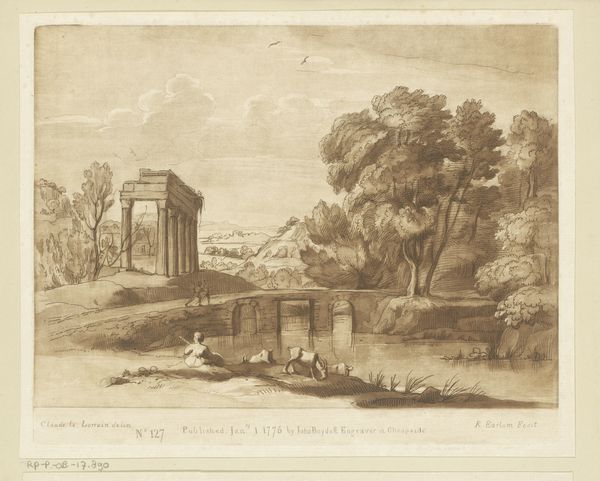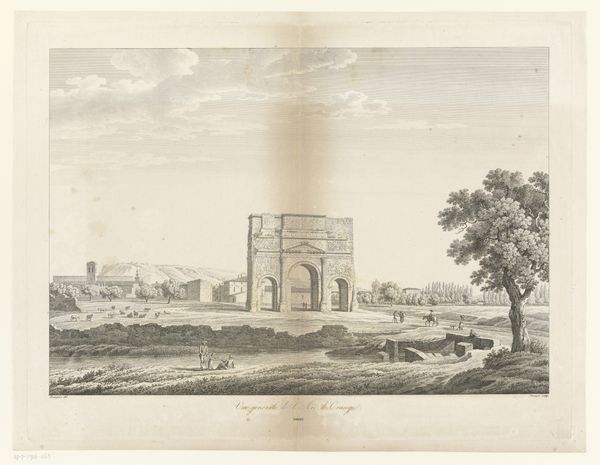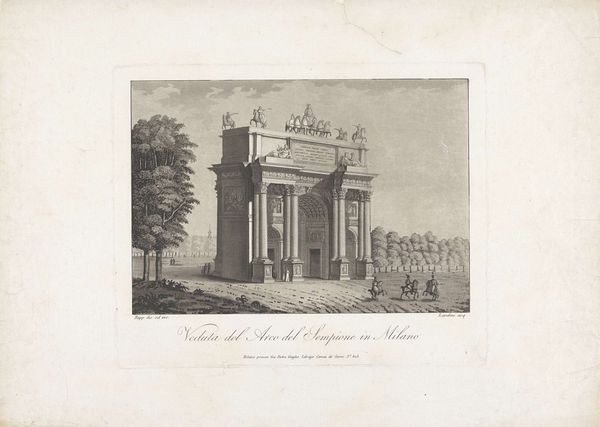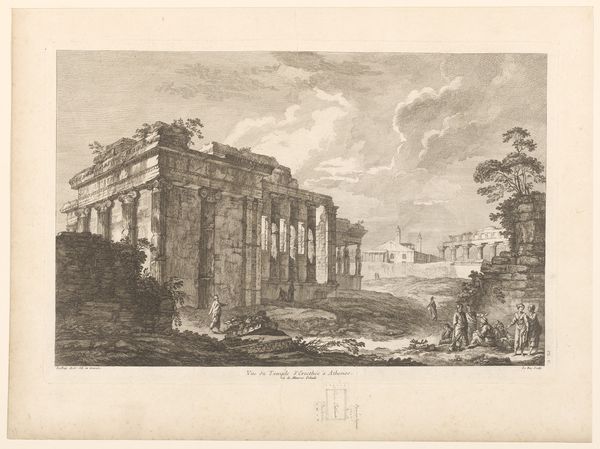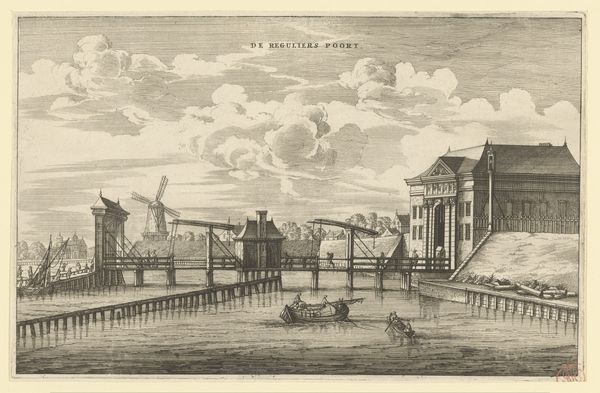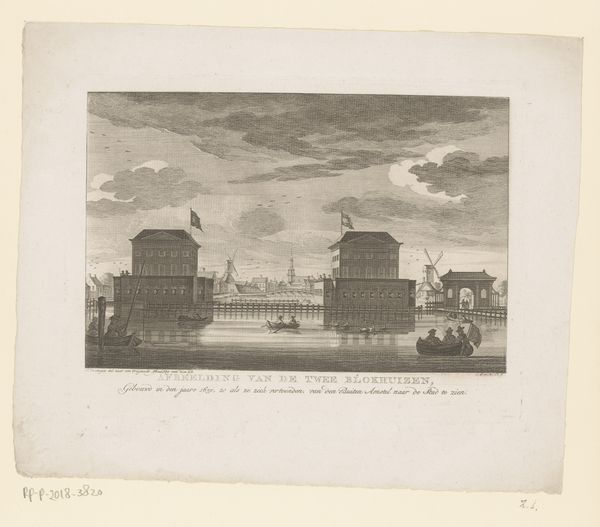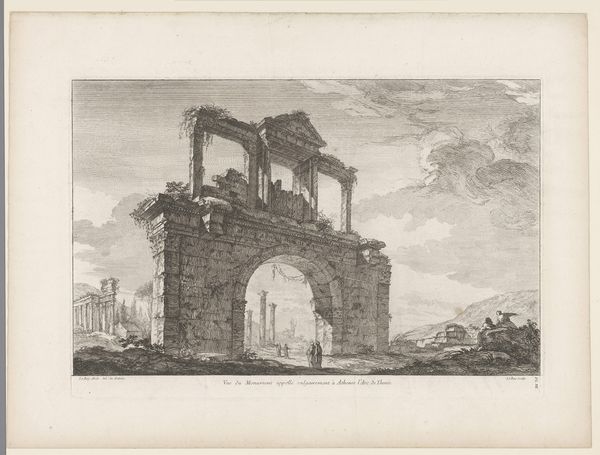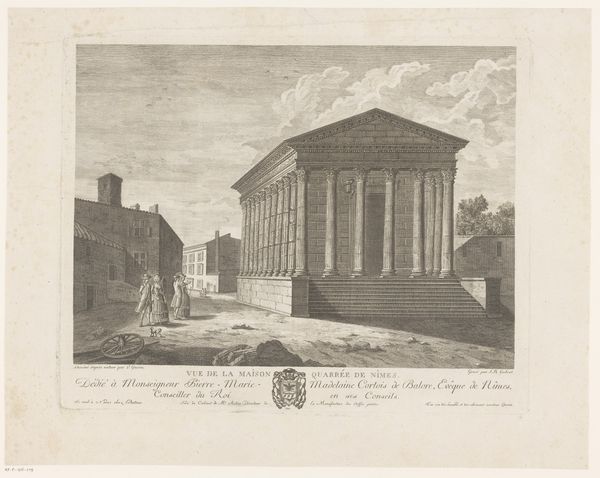
A Plan of a Triumphal Memorial....at Holyhead in honour of the visit of His Majesty George IV to the Principality of Wales on the 7th of August, 1821 by Thomas Harrison Esq. Architect 1817 - 1827
0:00
0:00
drawing, print, architecture
#
drawing
#
neoclacissism
# print
#
landscape
#
architecture
Dimensions: Image: 7 7/8 × 14 1/8 in. (20 × 35.8 cm) Sheet: 13 3/16 × 18 7/8 in. (33.5 × 48 cm)
Copyright: Public Domain
Curator: Looking at this piece, the most obvious element is this peculiar blend of ambition and melancholy, isn't it? Editor: It certainly catches the eye! Let me orient our listeners. Here we have a drawing, with print elements, of a planned triumphal memorial designed by Thomas Harrison, meant to commemorate King George IV's visit to Wales in 1821. The piece dates from around 1817 to 1827 and is called "A Plan of a Triumphal Memorial... at Holyhead." It depicts the memorial situated on the pier, with a lighthouse in the distance. Curator: Right, the proposed construction feels imposing, Romanesque, yet the subdued greyscale and the empty vista impart a sense of something lost before it began. I wonder about the availability of Portland stone at this remote location and whether this memorial would ever function in its historical and economic reality. Editor: Exactly! It makes one ponder about intended purposes and what really matters to us. What remains after grand gestures fail to materialize? Did it ever get built? Was there a supply disruption, or was there not sufficient capital for it to be built? Curator: Fascinating questions! Given the level of detail in this preparatory drawing by Augostino Aglio, the elder, one assumes there was considerable initial investment of human resources—planning, surveying, artistic labor—which now exists almost as a ghost of intention. Editor: Almost a landscape of wishful thinking made tangible, haunting in its own way. I’m reminded of how easily the weight of aspirations can be reduced to lines on paper, or the physical and social barriers preventing large ideas being developed, particularly in an era defined by material exploitation. And beyond the king and the architect, what would such a structure have meant to the everyday folks in Holyhead? What do you think they needed from a big idea? Curator: Those are important considerations, highlighting the often-unseen hands that shaped the potential building's historical meaning—or, in this case, its historical absence. A powerful commentary indeed. Editor: I completely agree! A potent and sad representation of power, labour, and how they might combine or clash to result in beautiful futility.
Comments
No comments
Be the first to comment and join the conversation on the ultimate creative platform.

